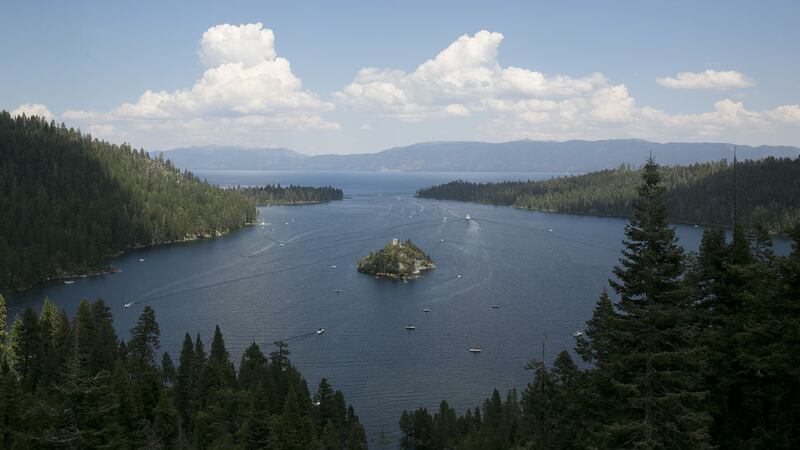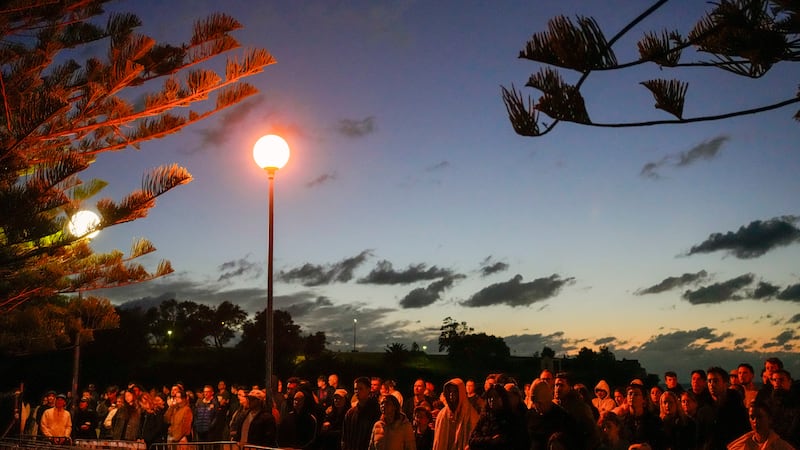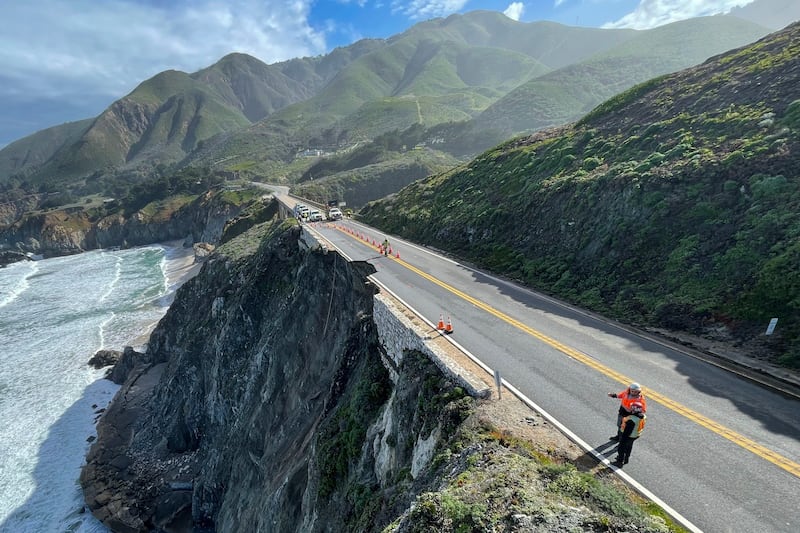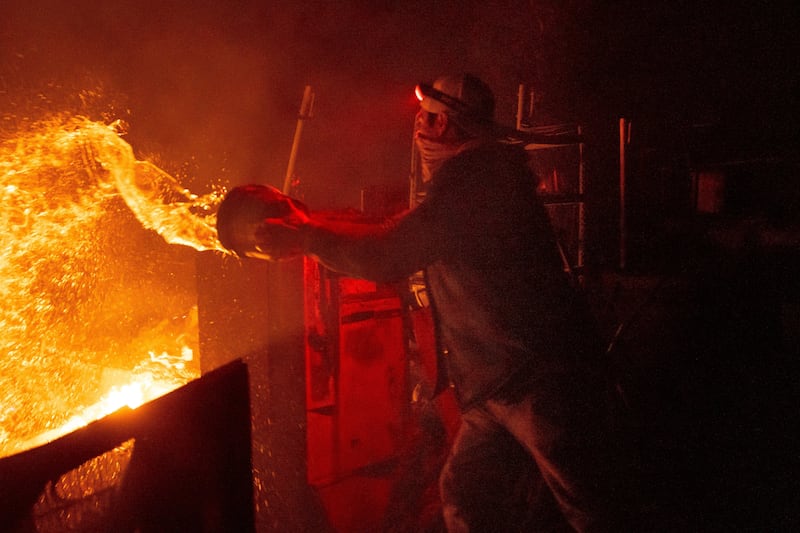A ferocious wildfire is approaching Lake Tahoe just hours after roads were clogged with fleeing cars as the entire California resort city of South Lake Tahoe was ordered to evacuate.
Communities just across the state line in Nevada have also been warned to get ready to leave.
The popular holiday destination, which is normally filled with tens of thousands of summer tourists, was emptied out on Monday as the massive Caldor Fire expanded to the north and south.
Vehicles loaded with bikes and camping gear and hauling boats were gridlocked in traffic among the hazy atmosphere as police and other emergency vehicles whizzed by.
“It’s more out of control than I thought,” evacuee Glen Naasz said of the fire that by late on Monday had crossed state highways 50 and 89 and burned mountain cabins as it moved down slopes into the Tahoe Basin.
Additional strike teams arrived just after dark and many of the new firefighters were immediately dispatched to protect homes in the Christmas Valley area about 10 miles south of the city, said fire spokesman Dominic Polito.
“We’re flooding the area with resources,” he said. “Wherever there are structures, there are firefighters on the ground.”
Residents just over the state line in Douglas County, Nevada, were under evacuation warnings.
Monday’s fresh evacuation orders, unheard of in the city, came a day after communities several miles south of the lake were abruptly ordered to leave as the fire raged nearby.
South Lake Tahoe’s main medical facility, Barton Memorial Hospital, proactively evacuated dozens of patients, and the El Dorado Sheriff’s Office transferred inmates to a neighbouring jail.
“There is fire activity happening in California that we have never seen before. The critical thing for the public to know is evacuate early,” said Chief Thom Porter, director of the California Department of Forestry and Fire Protection (Cal Fire).
“For the rest of you in California: Every acre can and will burn some day in this state.”
The threat of fire is so widespread that the US Forest Service announced on Monday that all national forests in California would be closed until September 17.
“We do not take this decision lightly but this is the best choice for public safety,” regional forester Jennifer Eberlien said.
Overnight, the already massive Caldor Fire grew seven miles in one area north-east of Highway 50 and more than eight miles (13 miles) in another, Cal Fire officials said.
More than 15,000 firefighters are battling dozens of California blazes, including crews from Utah, Washington, Wisconsin and West Virginia, said Mark Ghilarducci, director of California’s office of emergency services.
About 250 active-duty soldiers are being trained in Washington state to help with the arduous work of clearing forest debris by hand.
Crews from Louisiana, however, had to return to that state because of Hurricane Ida, “another major catastrophic event taking place in the country and is a pull on resources throughout the United States,” Mr Ghilarducci said.
Mr Porter said that only twice in California history have blazes burned from one side of the Sierra Nevada to the other, both this month, with the Caldor and Dixie fires.
The Dixie, the second-largest wildfire in state history at 1,205 square miles, about 65 miles north of the Lake Tahoe-area blaze, prompted new evacuation orders and warnings on Monday.
The Lake Tahoe area in the Sierra Nevada mountains is usually a year-round recreational paradise offering beaches, water sports, hiking, ski resorts and golfing.
South Lake Tahoe, at the lake’s southern end, bustles with outdoor activities, and with casinos available in bordering Stateline, Nevada.
The Caldor Fire has scorched nearly 292 square miles since breaking out on August 14.
After the weekend’s fierce burning, containment dropped from 19% to 15%. More than 600 structures have been destroyed, and at least 20,000 more are threatened.
Governor Steve Sisolak declared a state of emergency in Nevada, citing “the anticipation” that the wildfire in the Lake Tahoe area in California would burn across the state line into the Silver State.
The US National Weather Service has warned of dangerous fire conditions and winds lasting until Wednesday.








